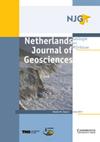通过造型揭示过去?对公元一千年荷兰三角洲连通性、居住和持久性的思考
IF 2.3
2区 地球科学
Q3 GEOSCIENCES, MULTIDISCIPLINARY
Netherlands Journal of Geosciences-Geologie En Mijnbouw
Pub Date : 2020-12-04
DOI:10.1017/njg.2020.12
引用次数: 1
摘要
摘要本文的重点是解开公元1千年在今天的荷兰和适用性建模时,研究过去。通过介绍几项分析连通性和居住模式变化(或持续性)的研究结果,得出了这些发现对(空间)建模的意义。罗马和中世纪早期之间的过渡在这方面特别有趣,因为它的特点是严重的泛欧洲政治,社会经济和人口变化。此外,最近的地球科学研究越来越多地指出,明显的气候和景观变化,如河流冲刷和洪水,同时发生。这些环境和文化动态相互交织和相互影响的程度通常是未知的,特别是在更大规模的层面上。低地,如荷兰,特别适合研究这些复杂的相互作用,因为边界条件,即维持一个地区现有平衡所需的一组条件,在这些地区对变化特别敏感。本文介绍了最近发展的几种景观考古模型的综合结果。这些模型在空间上分析了五种表现形式的自然和文化动态:路线网络、长途运输、定居模式、古人口和土地利用系统。结合起来,这些表现形式提供了关于连通性、持久性和可居住性的信息,这是整个文化景观的关键概念。结果表明,只有整合这些建模结果,才能重建文化景观变化的边界条件和高分辨率时空框架。同样,这些模型引起了对其适用性的反思,因此,指出需要新的理论框架和发展更多的多代理、循证和跨学科的考古学研究方法。文化景观与自然景观动态之间存在着明显的相互关系,因此需要一种更加完整和透明的研究态度,涵盖多个尺度,将文化景观作为一个整体进行研究。只有这样,模型才能尽可能地反映历史现实。本文章由计算机程序翻译,如有差异,请以英文原文为准。
Revealing the past through modelling? Reflections on connectivity, habitation and persistence in the Dutch Delta during the 1st millennium AD
Abstract This paper focuses on unravelling the 1st millennium AD in the present-day Netherlands and the applicability of modelling when studying the past. By presenting the results of several studies analysing changes (or persistence) in connectivity and habitation patterns, the significance of these findings for (spatial) modelling is derived. The transition between the Roman and early-medieval periods is particularly interesting in this respect as it is characterised by severe pan-European political, socio-economic and demographic changes. Additionally, recent studies in geosciences increasingly point to marked climatic and landscape changes, such as river avulsions and floods, occurring at the same time. The extent to which these environmental and cultural dynamics were entwined and mutually influential is generally unknown, especially on larger-scale levels. Lowlands, such as the Netherlands, are especially suited to study these complex interactions since boundary conditions, i.e. the set of conditions required for maintaining the existing equilibrium in a region, in such areas are particularly sensitive to change. In this paper the combined results of several recently developed landscape-archaeological models are presented. These models spatially analyse natural and cultural dynamics in five manifestations: route networks, long-distance transport, settlement patterns, palaeodemographics and land-use systems. Combined, these manifestations provide information on connectivity, persistence and habitation, key concepts for the cultural landscape as a whole. Results show that only by integrating these modelling outcomes is it possible to reconstruct boundary conditions and high-resolution spatio-temporal frameworks for cultural-landscape change. Equally, these models invite reflection on their applicability and, as such, point to the need for new theoretical framing and the development of more multi-proxy, evidence-based and transdisciplinary research approaches in archaeology. The evident interrelationship between cultural and natural-landscape dynamics necessitates a more integrated and transparent research attitude, covering multiple scales and studying the cultural landscape as a whole. Only then can models reflect historical reality as closely as possible.
求助全文
通过发布文献求助,成功后即可免费获取论文全文。
去求助
来源期刊
CiteScore
4.00
自引率
25.90%
发文量
14
审稿时长
>12 weeks
期刊介绍:
Netherlands Journal of Geosciences - Geologie en Mijnbouw is a fully open access journal which publishes papers on all aspects of geoscience, providing they are of international interest and quality. As the official publication of the ''Netherlands Journal of Geosciences'' Foundation the journal publishes new and significant research in geosciences with a regional focus on the Netherlands, the North Sea region and relevant adjacent areas. A wide range of topics within the geosciences are covered in the journal, including "geology, physical geography, geophyics, (geo-)archeology, paleontology, hydro(geo)logy, hydrocarbon exploration, modelling and visualisation."
The journal is a continuation of Geologie and Mijnbouw (published by the Royal Geological and Mining Society of the Netherlands, KNGMG) and Mededelingen Nederlands Instituut voor Toegepaste Geowetenschappen (published by TNO Geological Survey of the Netherlands). The journal is published in full colour.

 求助内容:
求助内容: 应助结果提醒方式:
应助结果提醒方式:


